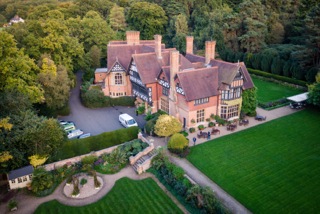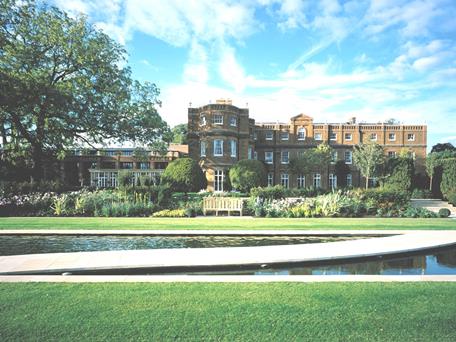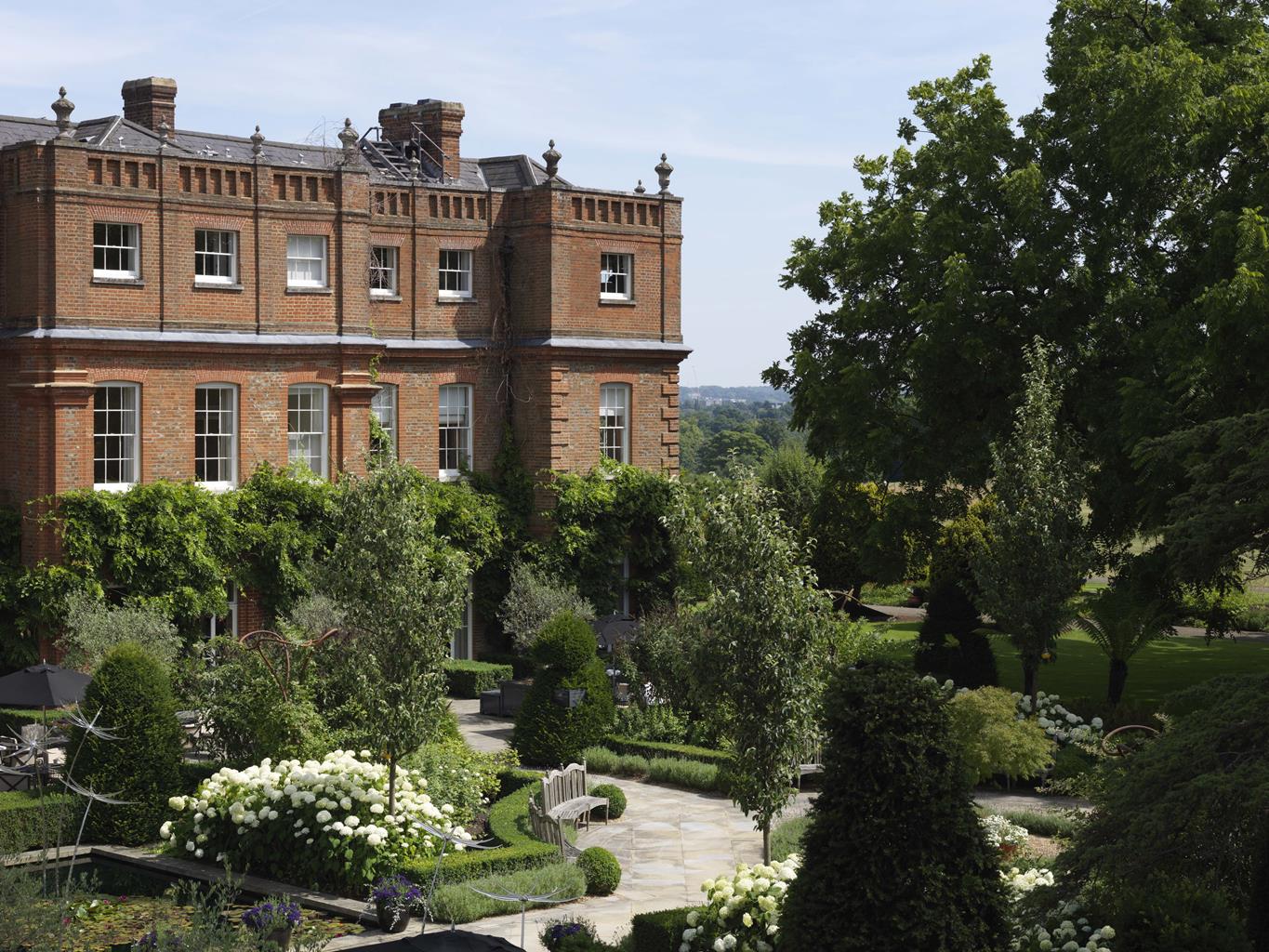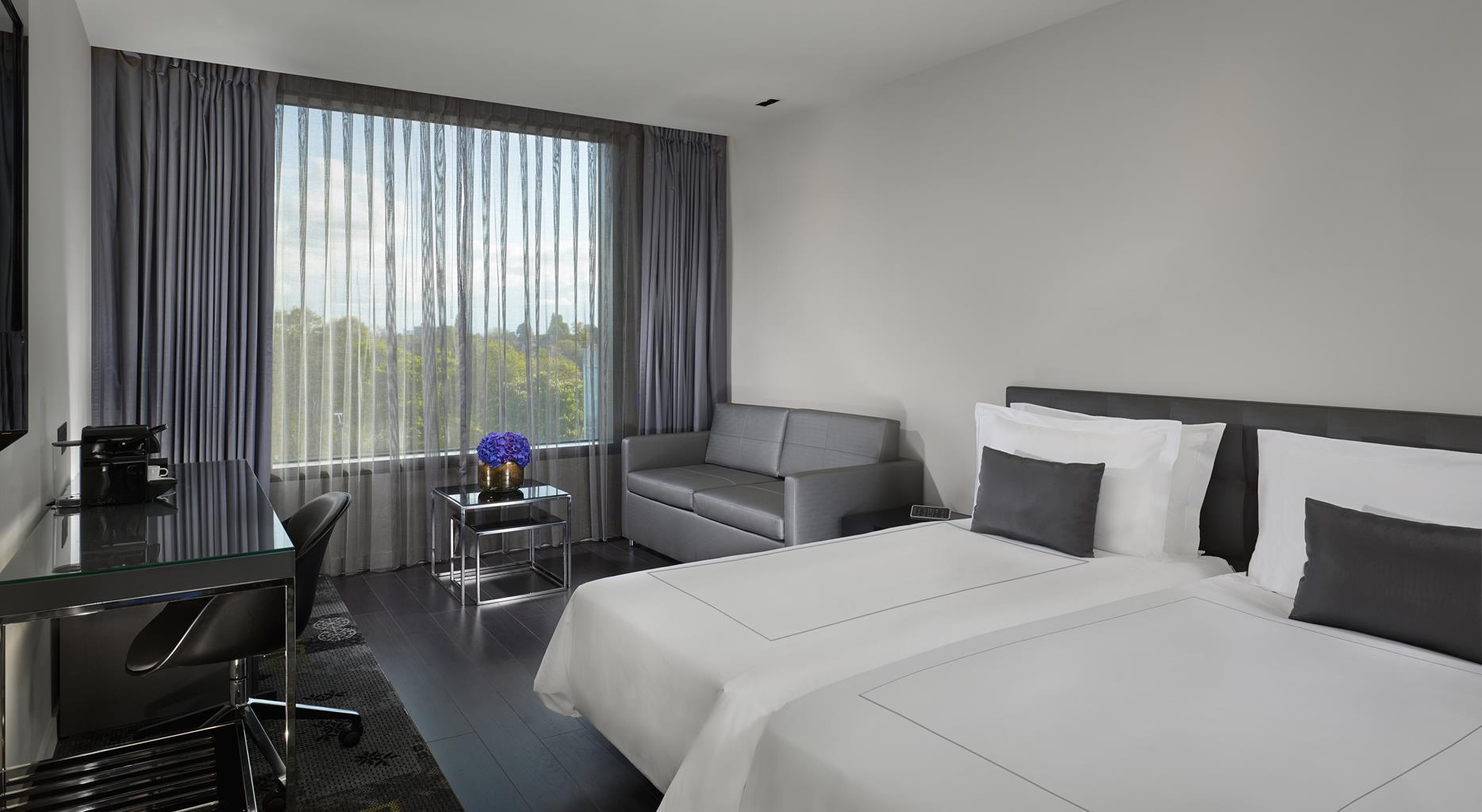Grim’s Dyke Hotel is set in 40 acres of beautiful gardens and tranquil woodlands, yet is just 12…
Harrow Weald and Bentley Priory

4 miles (6.4kms)
About the walk
By the spring of 1940, German forces had penetrated Western Europe so extensively that only Britain stood in the way of the Nazis taking complete control of the Continent. It became clear, however, that Adolf Hitler was up against one of the best air forces in the world, and Bentley Priory played a strategic part in this battle of land – and wits.
Behind the scenes at the priory
Unlike the Royal Air Force airfields that were home to British fighter planes during the war, the land surrounding Bentley Priory was without aircraft, yet it was one of a number of such places that were vital to the success of RAF operations.
The former country mansion was taken over by the RAF in 1926. It was enlarged considerably before it became the headquarters of Fighter Command, a group of high-ranking officers and other personnel on whose shoulders rested the ultimate responsibility for defending the country. This elite unit was formed in 1936 as part of the RAF's reorganisation and expansion in Britain. It was further divided into a number of groups, each of which took responsibility for a particular region. At the beginning of the Battle of Britain, for example, London and the Southeast was covered by 11 Group. These groups were also sub-divided into geographical areas for additional precision.
Bentley Priory was the centre of a highly sophisticated control network that relayed information on hostile aircraft movements via secure landlines from the radar stations to its 'filter room'. Once the plots of hostile aircraft had been established, the relevant group was alerted and the sector stations then activated the fighter squadrons.
Bentley's role in the Battle of Britain
When, in 1940, German forces occupied the whole of the northern European seaboard, Britain braced itself for attack. The Luftwaffe knew that to gain air superiority over southern England, it first needed to destroy the RAF's fighter planes. It was necessary to win control of the skies just long enough for land and sea forces to come ashore. The Battle of Britain, as it became known, ran from July to October. Initially the Luftwaffe attacked targets in the south, including radar stations, until it reached the airfields near to London in 11 Group. The Battle of Britain was a close shave, with some vital airfields around London being struck, but the enemy made a tactical mistake in choosing to concentrate on the capital. A week later, Fighter Command had recovered sufficiently to prove its superior strength. Today, Bentley Priory still monitors the security of British airspace.
Walk directions
From the car park turn right, along Warren Lane. At the junction cross the road and continue ahead along Priory Drive. Follow the road as it bends sharply to the right but, 50yds (46m) further on, go through a kissing gate on your left, signposted 'Bentley Way'. Continue along the track, with Bentley Priory to your right, and go through another kissing gate.
Where another path joins at right angles, carry on ahead (note that this is the path of your return route). The fenced area on the left is the deer park. At the end of the fencing ignore the path to the left but continue ahead as the track veers to the left, crosses a brook, and then reaches another kissing gate before emerging on to the common.
Continue ahead and turn sharp right across the common, following its edge. Take the first of three gaps through the trees into a small wood and cross the footbridge by the Exit sign (look carefully as there is a similar footbridge to the left). Bear right and follow this meandering, tree-lined track alongside a ditch. It continues, across a road for a good while before eventually it joins a driveway leading to a farm. Continue towards the road ahead.
Turn right. Ignore the first footpath sign on the left and take the one along an enclosed path a few paces further on, just before Honeysuckle House. Follow this path. When it reaches the A409 turn right and take the first left into Brookshill Drive.
At the end of Brookshill Drive turn right past farm buildings to Copse Farm, signposted 'Old Redding'. Follow this track then, at the T-junction, turn right. A few paces further on, go through the wooden gate on the left-hand side and continue along this footpath through the wood. It veers to the right of two houses with five-bar gates. Continue to follow Bentley Priory Circular Walk signs. The walk later runs along the side of Harrow Weald Common.
When the footpath reaches the end of the common turn right along Len's Avenue, so-named in memory of the park keeper who planted the trees here. When you get to the road turn left. After about 325yds (297m) cross over and pass through a large wooden gate marked with a small yellow arrow. (If by any chance you have emerged on to the road at a different place, the gate is between Glenthorne Cottage and Glenthorne Lodge.) Go through a kissing gate and then along a footpath that bisects the common, with the grounds to the military base at Bentley Priory on your left-hand side, and Heriot's Wood down the hill to your right. Follow this footpath as it gently descends, before joining the outward path near the deer park. Retrace your steps back to the car park in Warren Lane.
Additional information
Footpaths
Mixture of pretty woodland trails and open fields
No problems
OS Explorer 173 London North
Car park off Warren Lane
None on route
WALKING IN SAFETY
Read our tips to look after yourself and the environment when following this walk.
Find out more
Also in the area
About the area
Discover Greater London
Greater London is one of the world’s largest urban areas; 33 boroughs stretching north to Enfield, south to Croydon, east to Havering, west to Hillingdon and with central London at the heart of it all.
Greater London was officially created in 1965, but the boroughs themselves all have their own histories going back much further. Greenwich is home to the Prime Meridian, which all clocks on earth take their time from, while Hounslow contains Heathrow Airport, one of the busiest airports in the world. Greater London contains a multitude of parks and green spaces, from the six Royal Parks (including Richmond Park, Green Park, Hyde Park and Regent’s Park) and other huge open spaces like Hampstead Heath and Clapham Common; to smaller community spaces like Clissold Park in Stoke Newington and Burgess Park in Southwark.
The centre of London has its quiet spaces too, like Coram’s Field by Great Ormond Street, and Camley Street Natural Park, a stone’s throw from King’s Cross and St Pancras. One of the city’s most impressive features is the London Underground. Beginning in 1863 as the Metropolitan Railway, it took commuters into The City from the suburbs of Middlesex. It was the first underground railway in the world, and now consists of 11 lines, 270 stations, and 250 miles (402km) of track. It’s estimated that nearly five million journeys are taken every day, and there are nearly one and a half billion riders each year. At peak times, there are more than 543 trains whizzing around the Capital.
Nearby stays
Restaurants and Pubs
Nearby experiences
Recommended things to do
Why choose Rated Trips?
Your trusted guide to rated places across the UK
The best coverage
Discover more than 15,000 professionally rated places to stay, eat and visit from across the UK and Ireland.
Quality assured
Choose a place to stay safe in the knowledge that it has been expertly assessed by trained assessors.
Plan your next trip
Search by location or the type of place you're visiting to find your next ideal holiday experience.
Travel inspiration
Read our articles, city guides and recommended things to do for inspiration. We're here to help you explore the UK.













